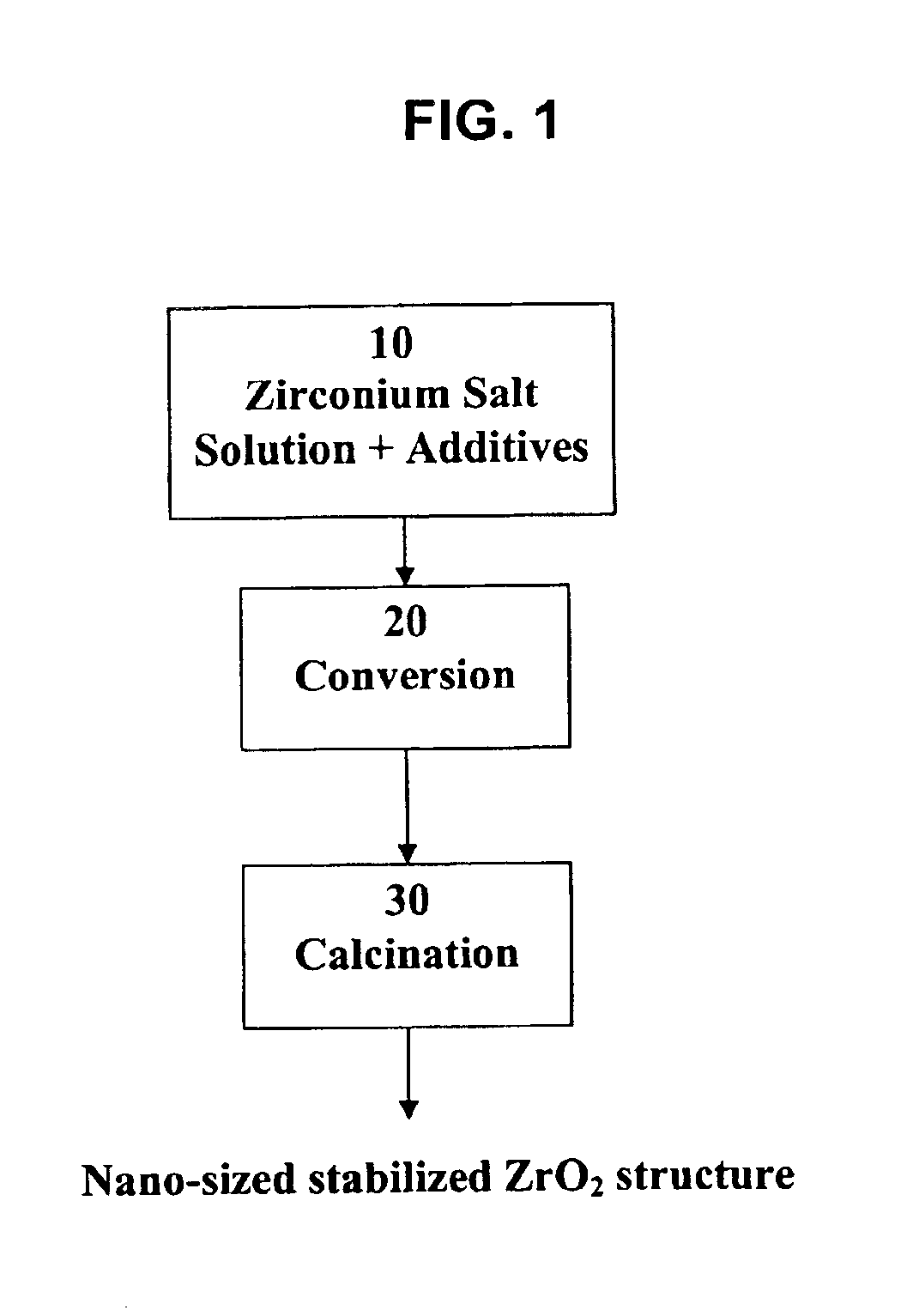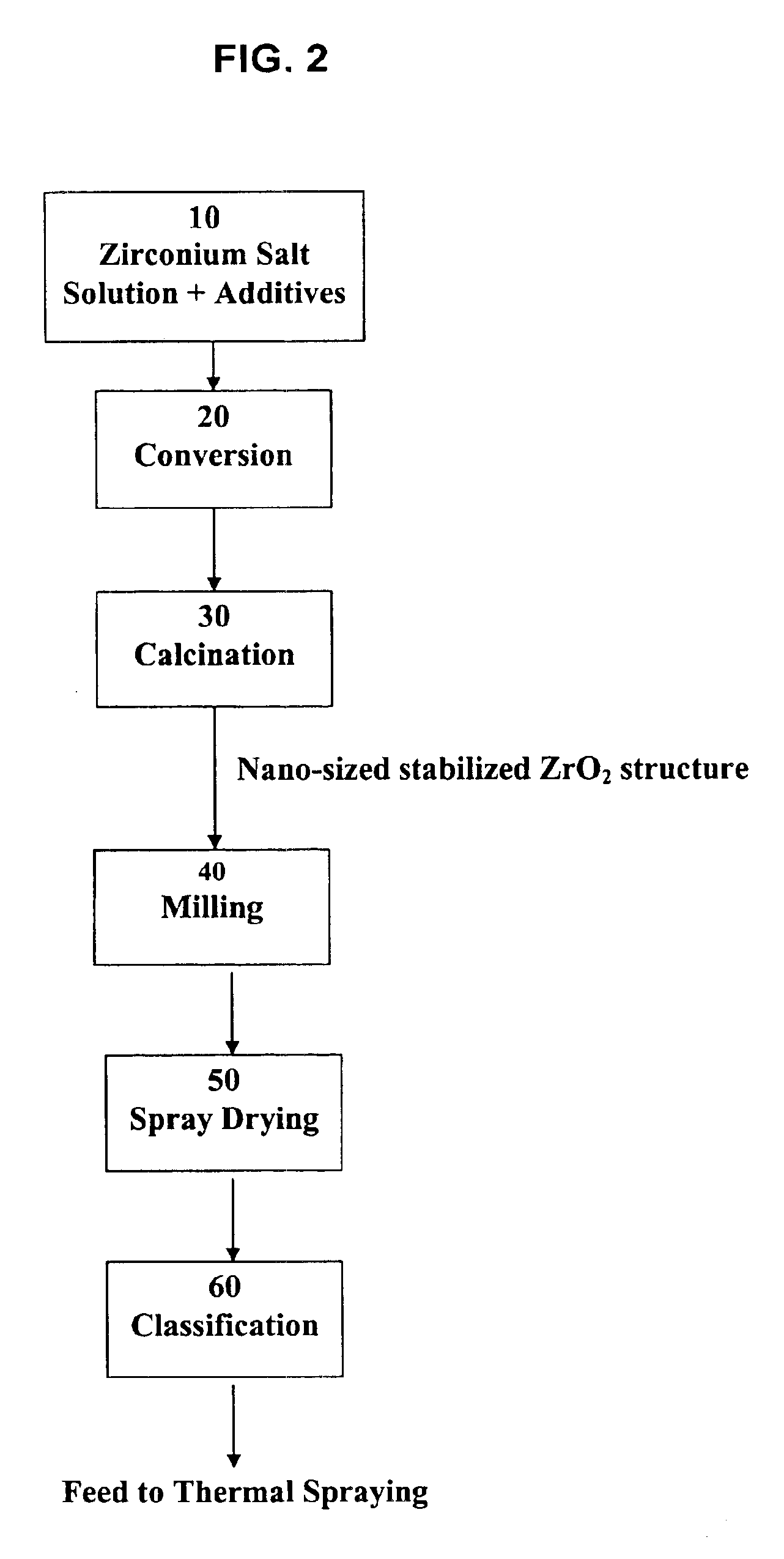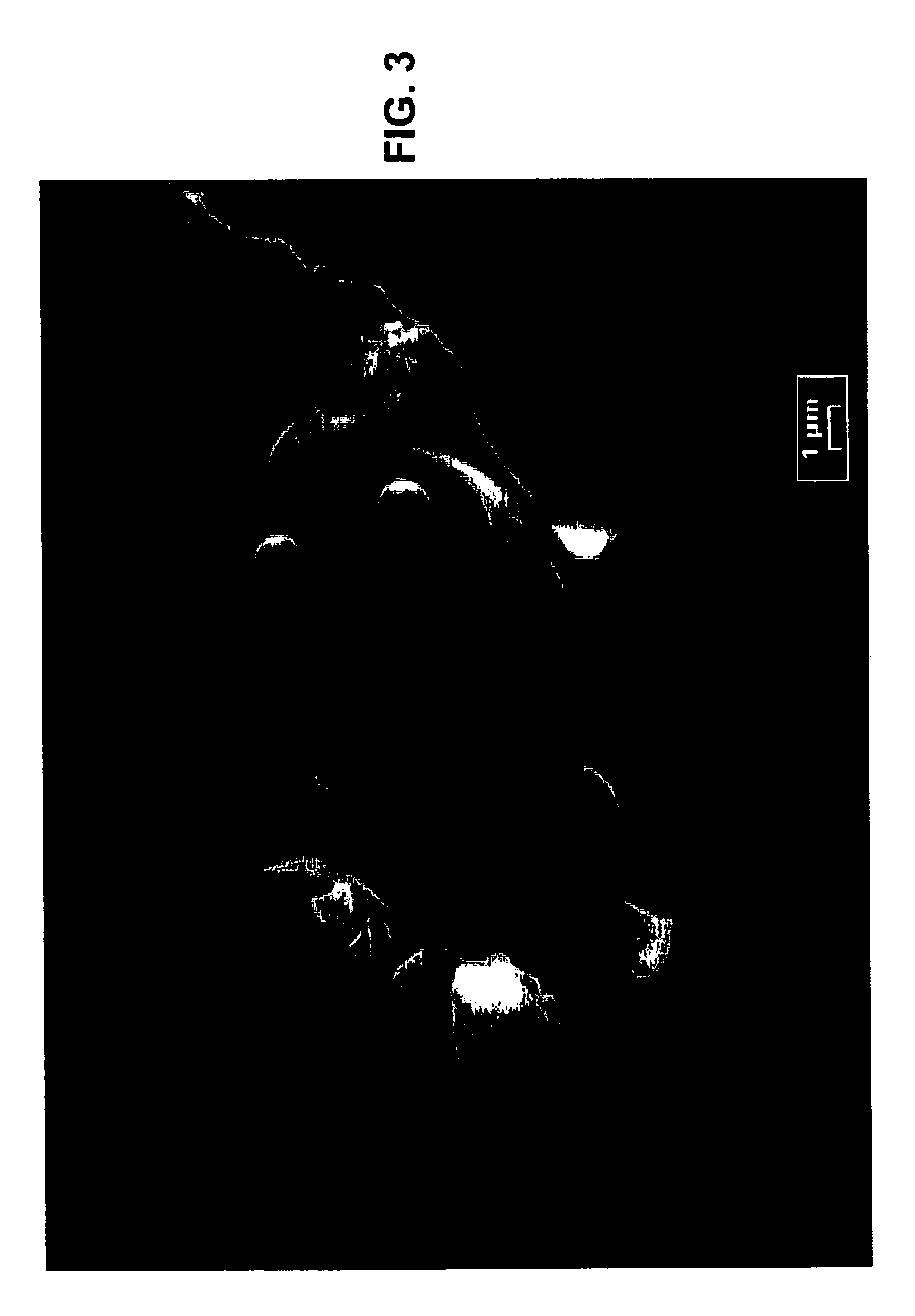Process for making nano-sized stabilized zirconia
a stabilized zirconia and nano-sized technology, applied in zirconium oxides, zirconium compounds, chemistry apparatuses and processes, etc., can solve the problems of inferior mechanical properties, destroying pure zirconia, and not economical to produce the bulk quantities needed for applications such as thermal barrier coatings and solid oxide fuel cells
- Summary
- Abstract
- Description
- Claims
- Application Information
AI Technical Summary
Benefits of technology
Problems solved by technology
Method used
Image
Examples
example i
[0038]Reagent grade ZrOCl2 and YCl3 are dissolved in a 2 M HCl solution to provide a starting solution containing 39 g / l Zr and 7 g / l Y. The solution is injected through the nozzle of a spray dryer. The spray dryer has a titanium chamber, the air inlet temperature is about 600° C. and the outlet is about 250° C. The injection process substantially completely evaporates the solution, hydrolyzes the material, and forms an amorphous intermediate product, which is recovered in a cyclone. The intermediate product is dry and amorphous. The loss on ignition when this product is heated to 800° C. is about 25%. FIG. 3 is an electron micrograph of this intermediate product. This product is further calcined at 1000° C. for 6 h. The resulting crystal has 100% cubic structure. FIG. 4 is an electron micrograph of this product, showing part of a spherical shell with a thickness of about 450 nm and individual particles of about 100 nm in size.
example ii
[0039]Reagent grade ZrOCl2 and CaCl2.2H2O are dissolved in a 2 M HCl solution to provide a starting solution containing 44 g / l Zr and 1 g / l Ca. The solution is injected through the nozzle of a spray dryer. The spray dryer has a titanium chamber, the air inlet temperature is about 600° C. and the outlet is about 250° C. The injection process substantially completely evaporates the solution, hydrolyzes the material, and forms an amorphous intermediate product, which is recovered in a cyclone. The intermediate product is dry and amorphous. The loss on ignition when this product is heated to 800° C. is about 20%. This powder is further calcined at 700° C. for 6 h. The resulting crystal has 100% cubic structure. FIG. 5 is an electron micrograph of this product, showing part of a spherical shell with a thickness of about 600 nm and individual particles of about 30 nm in size.
example iii
[0040]A solution of Zr oxychloride and yttrium chloride is prepared as in example I. The solution is treated in a spray dryer in the same conditions as in example I. The resulting powder is calcined at 600° C. for 4 h. The calcined powder is milled in water to produce an aqueous slurry. Next, the aqueous slurry is spray-dried, producing weakly agglomerated nano-sized zirconia. Next, the agglomerates of nano-sized zirconia are sintered at 1000° C. for 1 h to produce a partially fused agglomerate structure. The partially fused agglomerates still have a broad distribution of agglomerate sizes. The broad distribution of agglomerate sizes is narrowed in an air classifier to separate the size fraction 15 to 50 μm. The larger and smaller size fractions are recycled. This classified product can be used as a nano-structured thermal spraying powder.
PUM
| Property | Measurement | Unit |
|---|---|---|
| temperature | aaaaa | aaaaa |
| temperature | aaaaa | aaaaa |
| thickness | aaaaa | aaaaa |
Abstract
Description
Claims
Application Information
 Login to View More
Login to View More - R&D
- Intellectual Property
- Life Sciences
- Materials
- Tech Scout
- Unparalleled Data Quality
- Higher Quality Content
- 60% Fewer Hallucinations
Browse by: Latest US Patents, China's latest patents, Technical Efficacy Thesaurus, Application Domain, Technology Topic, Popular Technical Reports.
© 2025 PatSnap. All rights reserved.Legal|Privacy policy|Modern Slavery Act Transparency Statement|Sitemap|About US| Contact US: help@patsnap.com



